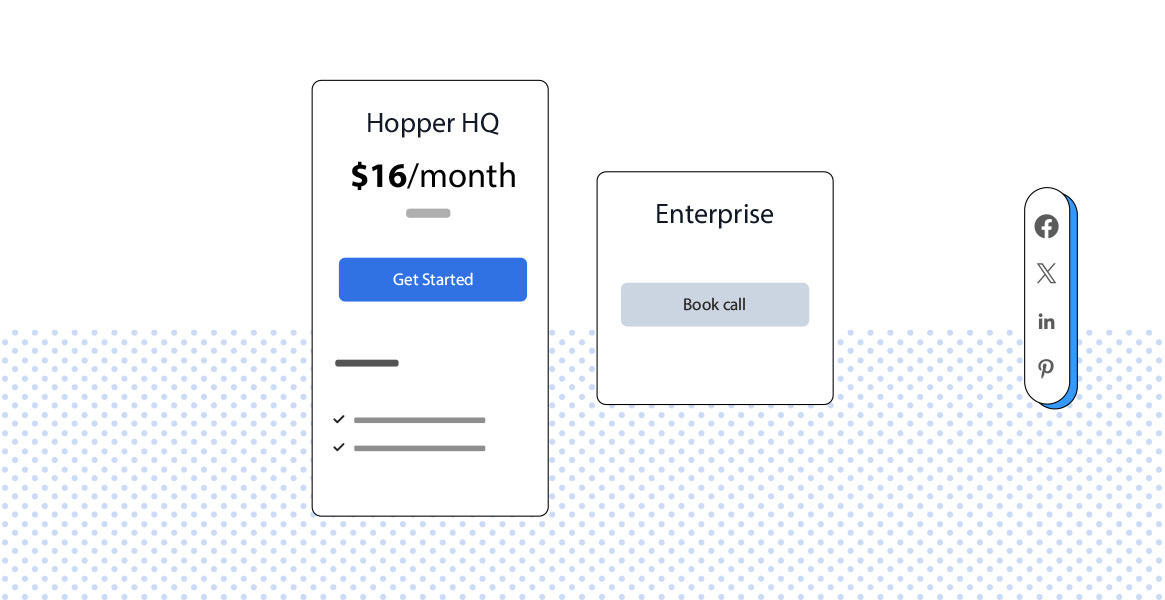Have you ever wondered why some YouTube Shorts go viral while others barely make a blip?
Or how some creators seem to crack the code while others struggle to get noticed?
You’re not alone.
The YouTube Shorts algorithm is constantly evolving, and understanding how it works could be the game-changer for your content strategy.
If you’re not staying ahead of the curve, you’re missing out on massive opportunities to grow your audience, increase engagement, and drive traffic.
But don’t worry, this article will break down the latest shifts in the YouTube Shorts algorithm and give you actionable tips to win.
Want to outsmart the algorithm, create content that skyrockets, and avoid the frustration of sinking time into videos that go nowhere?
Keep reading — it’s time to start winning with YouTube Shorts!
CTA
Automate Your YouTube Shorts Posting With Social Champ!
With Social Champ, you can schedule your Shorts for maximum reach before your competition does. Don’t let others get ahead — automate now!
Short Summary
- The YouTube Shorts algorithm selects which short-form videos appear in users’ Shorts feeds.
- It relies on viewer behavior signals such as watch time, swipe rate, engagement (likes, comments, shares, subscriptions), and rewatchability.
- Videos that retain attention and generate interaction are more likely to be promoted by the algorithm.
- It follows an explore/exploit model, testing content with small audiences before scaling to wider reach if performance is strong.
- Creators who focus on strong starts, high engagement, and consistent posting are more likely to succeed under the current algorithm.
What Is the YouTube Shorts Algorithm?
The system that decides which Shorts are shown to viewers is called the YouTube Shorts algorithm.
The algorithm is specifically designed for quick, mobile-first content consumption.
It assesses key viewer behavior to surface engaging videos in the Shorts feed.
On the other hand, YouTube’s main video algorithm prioritizes longer watch sessions and click-through rates.
Core Functions of the Algorithm Include:
- Video Completion Rate: The algorithm considers video completion rates over click-based merit.
- Engagement Metrics: It assesses content engagement, such as likes, shares, comments, and subscriptions.
- Swipe Behavior: The algorithm analyzes swipe behavior to determine viewer interest or disinterest.
The algorithm uses these signals to discover the kind of Shorts that must be surfaced in the feed.
Moreover, it also determines how often to show these Shorts to different types of viewers.
Understanding the YouTube Shorts algorithm is highly significant for any creator who wants to gain momentum and expand invariably on the platform.
Featured Article: 7 Key Social Media Listening Metrics Every Marketer Needs to Know in 2025
How Does the YouTube Shorts Algorithm Work?
The YouTube Shorts algorithm functions by analyzing user behavior in real time.
It determines which videos to show in the Shorts feed.
Based on the viewers’ past interactions and immediate responses, the primary objective of the YouTube Shorts algorithm is to prioritize content that aligns with the viewers’ interests.
Key Factors the Algorithm Considers Include
-
Watch Time
One of the strongest indicators of content quality is watch time.
The algorithm considers a video as engaging and increases its visibility if most users watch it all the way through consistently or even close to it.
-
Swipe Rate
The algorithm also considers swipe rate. When users swipe away quickly from a Short, it signals a lack of interest.
-
Engagement Metrics
Viewer satisfaction is indicated by frequent positive actions like likes, comments, shares, and subscriptions.
Increased engagement contributes to the possibility of the video being shown to a broader audience.
-
Explore vs. Exploit Model
YouTube initially tests Shorts with a small group of users (explore).
Based on the above metrics, if a video does well, it is promoted to a broader audience (exploit).
Using this model, it’s easier to identify the content that’s more likely to perform well on a larger scale.
The algorithm is enabled to surface high-performing and relevant content through these components together.
Creators should prioritize creating videos that are immediately engaging, encourage interaction, and maintain strong viewer retention from the beginning to make the most of the YouTube Shorts algorithm.

Recent Changes to the YouTube Shorts Algorithm
The YouTube Shorts algorithm underwent multiple updates this year, significantly affecting how Shorts are assessed and promoted.
This shows how YouTube is concerned about making the Shorts experience more engaging, personalized, and aligned with viewer expectations.
Any creator who wants to stay competitive and maximize their reach should understand these updates.
Expanded Video Length (Up to 3 Minutes)
YouTube now allows Shorts up to 3 minutes long, increasing the previous 60-second limit. This allows creators to be more flexible in storytelling and content depth.
Whereas, better video performance is not promised with longer video duration alone.
YouTube algorithm keeps viewer retention as a top priority.
The longer format could work against the creator if users don’t watch most of the video.
Creators must ensure that extended Shorts maintain high engagement and completion rates.
A 3-minute video that loses viewers in the first 30 seconds will perform poorly, even if it offers more content.
Advanced Viewer Tracking
The platform has refined how it calculates views by introducing enhanced tracking based on viewer behavior, including:
- Retention Rates: YouTube now emphasizes how much of a Short is actually watched, not just whether it received a view.
- Repeat Viewing: If viewers return to watch a Short multiple times, it’s seen as a strong signal of content value and relevance.
This update makes passive or accidental views less impactful. Instead, consistent and meaningful viewer engagement is prioritized.
Today’s High-performing Shorts are those that capture and hold attention throughout the video, encouraging viewers to rewatch or interact.
AI-Based Content Distribution
YouTube continues to enhance its use of artificial intelligence to personalize the Shorts feed.
The algorithm now better understands individual user preferences, serving them content that aligns with their viewing history, watch time patterns, and engagement behaviors.
Rather than relying solely on broad popularity, Shorts are now matched more precisely with niche audiences.
This means even smaller creators can reach relevant viewers if their content aligns well with specific interests.
The Shorts feed is more dynamic and targeted.
Creators benefit when their videos resonate with well-defined audience segments, rather than trying to appeal to everyone.

Tips to Optimize Your Content for the YouTube Shorts Algorithm
Succeeding with YouTube Shorts requires more than just uploading videos frequently.
With the platform’s algorithm becoming increasingly sophisticated, creators must strategically optimize their content to meet the algorithm’s performance standards.
This involves maximizing viewer engagement, retention, and discoverability from the moment a Short begins.
Here are five actionable strategies to help your content perform better within the YouTube Shorts algorithm.
-
Hook Viewers Immediately
The first few seconds of a Short are critical.
Since viewers can swipe away instantly, capturing attention early is essential to reduce swipe-away rates, a key negative signal to the algorithm.
- Begin your video with a visually striking moment or a compelling question.
- Avoid slow introductions or unnecessary build-up; dive straight into the core message or action.
- Use fast-paced editing or dynamic visuals to hold attention from the start.
If a viewer swipes away too quickly, the algorithm interprets your video as unengaging and limits its distribution.

Snapshot of YouTube Short With Engaging Hook -
Encourage Viewer Interaction
Engagement metrics such as likes, comments, shares, and new subscriptions significantly influence how widely the algorithm pushes a Short.
Directly prompting viewers to engage can improve these signals.
- Ask questions that spark quick responses in the comments.
- Include calls-to-action (CTAs) such as “double tap if you agree” or “comment your thoughts below.”
- Create content that encourages sharing. For example, relatable moments or surprising facts.
Higher interaction rates signal the algorithm that the content is valuable, prompting broader visibility in the Shorts feed.
-
Optimize for Rewatchability
Content that viewers watch more than once sends strong positive signals to the algorithm.
Rewatchability can be achieved through various creative techniques:
- Use loops or seamless transitions that make the video replay smoothly.
- Include subtle details that viewers may miss the first time, encouraging them to rewatch.
- Structure the content to deliver a payoff or twist at the end, increasing the chance that viewers will rewatch to experience it again.
Repeat views show that your content maintains interest, which can greatly enhance its performance in the algorithm.
-
Incorporate Trends and Relevant Hashtags
Staying current with platform trends helps your content align with what audiences already consume.
This includes using trending audio, challenges, or timely topics.
- Regularly browse the Shorts feed to identify trending formats and themes.
- Use hashtags relevant to both your niche and trending topics to improve discoverability.
- Adapt trends in a way that fits your content style, rather than simply copying them.
Trending content often gets a temporary visibility boost. Using relevant hashtags and formats helps the algorithm categorize and recommend your video appropriately.
-
Maintain a Consistent Upload Schedule
Posting content regularly trains the algorithm to recognize your channel as an active creator.
This can lead to more frequent testing of your content with new viewers.
- Establish a posting frequency you can maintain, whether daily, a few times per week, or weekly.
- Use content planning tools to stay organized and ensure consistent output.
- Monitor performance to identify your best posting days and times.
Consistency signals reliability to the platform, helping build long-term visibility and audience growth.
By applying these optimization techniques, creators can increase their chances of success within the current YouTube Shorts algorithm.
High-performing content is not the result of luck; it’s the outcome of deliberate strategy, data-driven planning, and consistent execution.
CTA
Struggling to Stay Relevant on YouTube Shorts?
Track your performance, schedule your posts ideally, and adjust on the fly with Social Champ. Don’t wait—be the first to win.
Leveraging Social Champ to Boost Your YouTube Shorts Performance
Strategy is just as important as creativity in a competitive content landscape like YouTube Shorts.
While understanding the Shorts algorithm is critical, implementing a consistent, data-informed publishing process can give creators a distinct edge.
This is where a content management platform like Social Champ becomes a valuable asset.

Social Champ offers a suite of tools designed to streamline and strengthen your short-form video strategy.
From scheduling to analytics to cross-platform promotion, it helps creators not only keep up with the algorithm but stay ahead of it.
Content Scheduling: Post at the Right Time
Timing plays a significant role in how your content performs.
Posting when your target audience is most active can increase initial engagement, positively influencing how the YouTube Shorts algorithm evaluates and promotes your video.
With Social Champ, creators can:
- Schedule Shorts in advance to publish at optimal times based on audience data.
- Maintain a consistent posting frequency, which helps signal reliability to the algorithm.
- Free up creative time by automating the publishing process.
Early performance often determines whether a Short gains traction or gets buried. Scheduled, timely posting ensures you don’t miss peak engagement windows.
Performance Analytics: Measure What Works

Understanding what content is performing, and why, is essential to long-term growth.
Social Champ’s analytics tools give creators in-depth insights into audience behavior, content performance, and engagement trends.
Key Features Include:
- Tracking views, watch time, and interactions for each Short.
- Identifying patterns across high-performing videos.
- Optimizing future content based on data-driven decisions.
The YouTube Shorts algorithm rewards consistently engaging content.
With accurate data, creators can fine-tune their approach and create videos more likely to succeed.
Cross-Platform Integration: Expand Your Reach
Maximizing the impact of your Shorts content often means sharing it beyond YouTube.
Social Champ allows creators to repurpose and distribute their Shorts across multiple platforms such as Instagram Reels, Facebook, and TikTok, without manually uploading to each.
Benefits Include:
- Centralized content planning across all major social media platforms.
- Consistent brand messaging across channels.
- More exposure with less manual effort.
Cross-platform visibility helps grow your audience and attract engagement beyond YouTube.
This broader footprint can indirectly boost channel traffic and subscriber growth.
By integrating Social Champ into your content strategy, you can more effectively align with how the YouTube Shorts algorithm operates, prioritizing consistent engagement, timely uploads, and data-driven decision-making.
Rather than treating content as a one-off effort, creators can use Social Champ to build a repeatable, scalable process that leads to sustained performance improvement.
Featured Article: 10 Best Digital Marketing Platforms for 2025 – Boost Your Growth
When Did YouTube Shorts Launch and How Has the Algorithm Evolved?
YouTube Shorts launched in September 2020, initially in India.
The feature expanded globally in 2021, becoming a cornerstone of YouTube’s strategy.
Over time, the Short’s algorithm has matured from a simple engagement model to a complex system using artificial intelligence and personalized recommendation engines.
Key Milestones Include:
- 2020–2021: Initial beta and global rollout.
- 2023: Monetization and analytics tools added.
- 2025: Introduction of 3-minute Shorts, refined view metrics, and enhanced personalization.
Understanding how the algorithm has evolved helps creators align their content strategies with current best practices and audience expectations.
Conclusion
The YouTube Shorts algorithm is now more advanced, strategic, and influential than ever.
Success on the platform depends on understanding how it works and tailoring your content to meet its criteria.
From increased video length to AI-driven personalization, staying ahead of the algorithm is vital.
Whether you’re just starting or looking to scale your Shorts strategy, tools like Social Champ and consistently applying best practices can help you achieve meaningful growth.
Start creating, stay consistent, and let the algorithm do the rest.
CTA
Lights, Camera… Scheduled!
Take control of your upload calendar and keep your audience coming back. Automate it all in one place with Social Champ’s YouTube Scheduler.











1 thought on “YouTube Shorts Algorithm 2025: How It Works & How to Win”
Finally, a clear explanation of the YouTube Shorts algorithm in 2024! As a content creator navigating the ever-changing landscape of YouTube is actually a way to success.